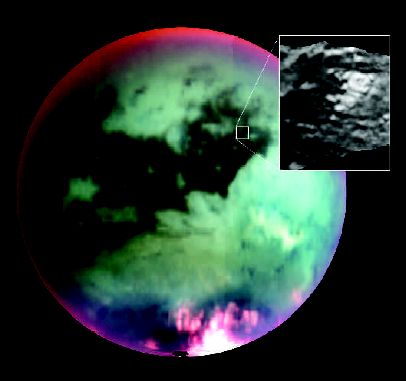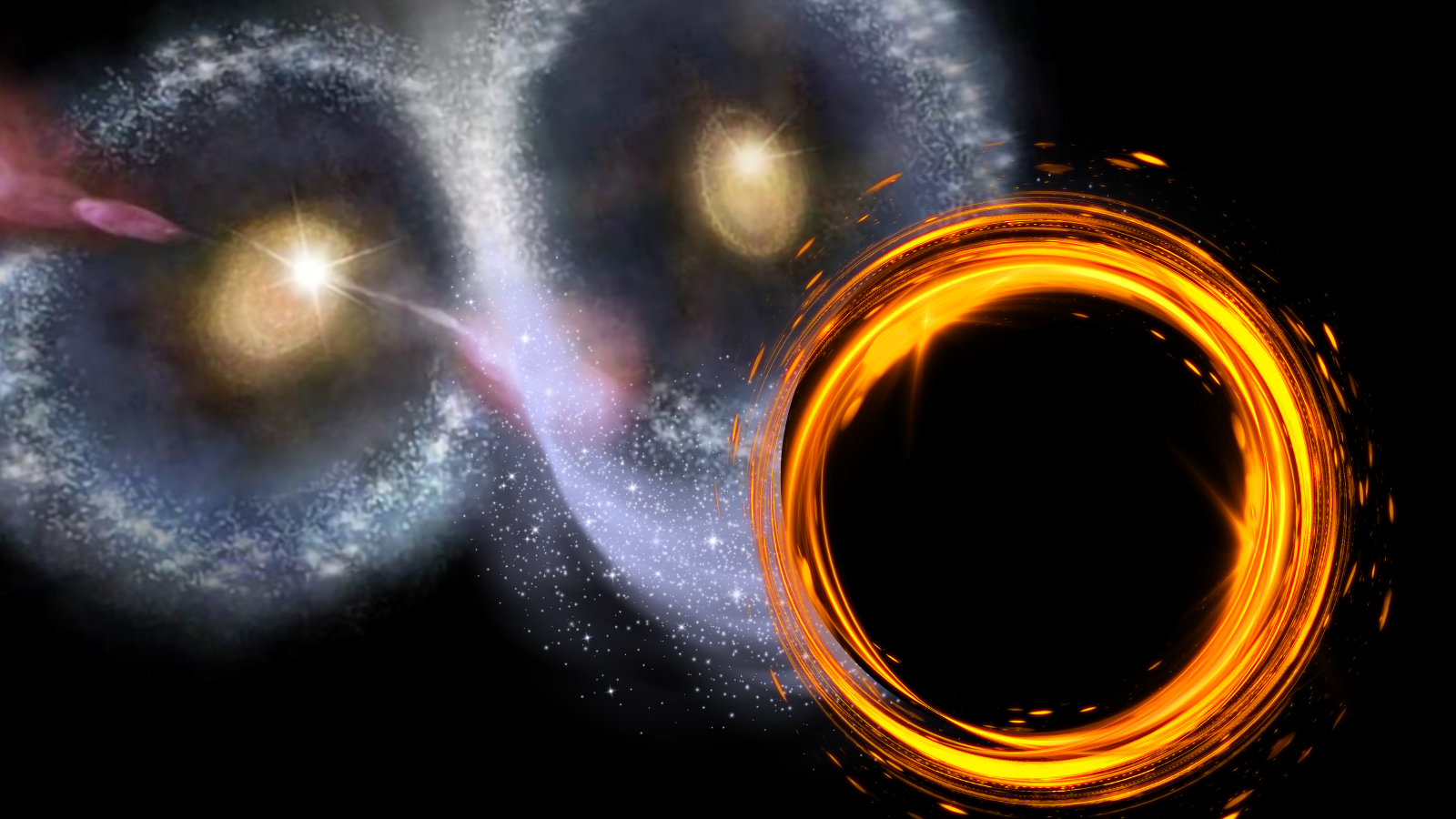Unmasking Titan: Volcano Spotted on Saturn's Smoggy Moon

Scientists think they've spotted a large volcano on Saturn's smoggy moon Titan.
The mountain could be pumping methane into the atmosphere, which would explain the perplexing presence of the chemical that helps create Titan's dense atmospheric shroud.
The new study, announced today, also adds to mounting evidence showing there are no widespread methane oceans on Titan, as scientists had predicted prior to the Cassini mission.
Cassini's latest infrared data and imagery allowed researchers to peer through the smog and look at patches of the surface.
The observations reveal no evidence for craters. Surely asteroids and comets have hit the moon, just as they have pummeled other objects in the solar system. So the baby-faced appearance suggests Titan's surface is constantly remade, possibly by eruptions of volcanoes like the one just found, according to a team led by French researcher Christophe Sotin.
The results are reported in the June 9 issue of the journal Nature.
Theories crash
Breaking space news, the latest updates on rocket launches, skywatching events and more!
Previous ground-based images of Titan had revealed starkly different light and dark patches that scientists thought might represent areas of differing composition. Perhaps Titan had towering mountains and vast seas of methane, the thinking went. Some had even speculated on the huge waves that would form under the different gravity conditions.
Like waves, theories of Titan have come crashing down in recent months as Cassini and its surface probe, Huygens, have returned the best views ever of the mysterious moon.
Sotin and his colleagues now propose that the bright regions are areas of different slope, reflecting more light, and that most of Titan's frigid surface may be of similar icy composition.
"Whatever the bright and dark regions on Titan's surface turn out to be, Cassini is taking us into a new and thrilling era of satellite exploration," writes Louise Prockter of Johns Hopkins University in a perspective on the work also published by the journal. "With 40 more planned close flybys of Titan, as well as of several other saturnian moons, we are only at the beginning of this fantastic journey."
The volcano
Scientists have been searching for the mechanism that would replace methane in Titan's atmosphere. Methane decays over time, and since it's the second most prevalent component of Titan's air, after nitrogen, it must constantly come from somewhere.
Previous observations had suggested hints of volcanoes on Titan, but the results were inconclusive.
The newfound apparent volcano is about 19 miles (30 kilometers) wide.
"We propose that the structure is a dome formed by upwelling icy plumes that release methane into Titan's atmosphere," Sotin and his colleagues write.
And what would fuel a Titanic volcano?
All moons, including our own, are stretched and pulled by the planet they orbit. The process is called tidal motion -- it can move oceans and more. Because Titan's orbit is elliptical, and because Saturn is so massive, tidal motion would be strong enough to generate heat within the moon. That heat could drive eruptions, the researchers say.
Jupiter's moon Io, affected by immense tidal forces, is the most volcanic object in the solar system.
- Cassini Special Report
- Huygens Probe Sheds New Light on Titan
- Europe's Huygens Probe Landed in Titan Mud
- Moon Mechanics: What Really Makes Our World Go 'Round

Rob has been producing internet content since the mid-1990s. He was a writer, editor and Director of Site Operations at Space.com starting in 1999. He served as Managing Editor of LiveScience since its launch in 2004. He then oversaw news operations for the Space.com's then-parent company TechMediaNetwork's growing suite of technology, science and business news sites. Prior to joining the company, Rob was an editor at The Star-Ledger in New Jersey. He has a journalism degree from Humboldt State University in California, is an author and also writes for Medium.
